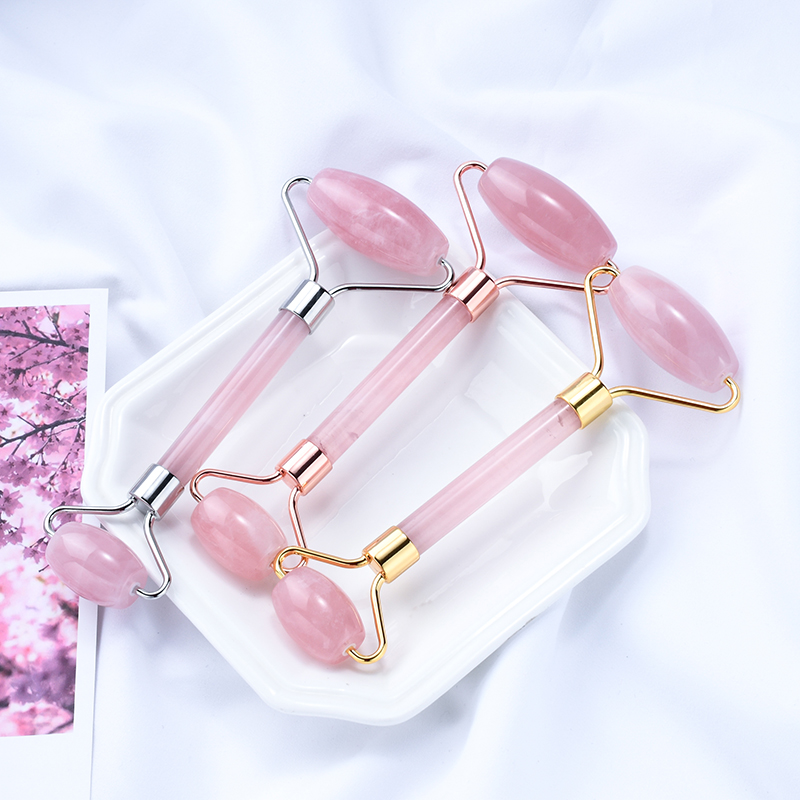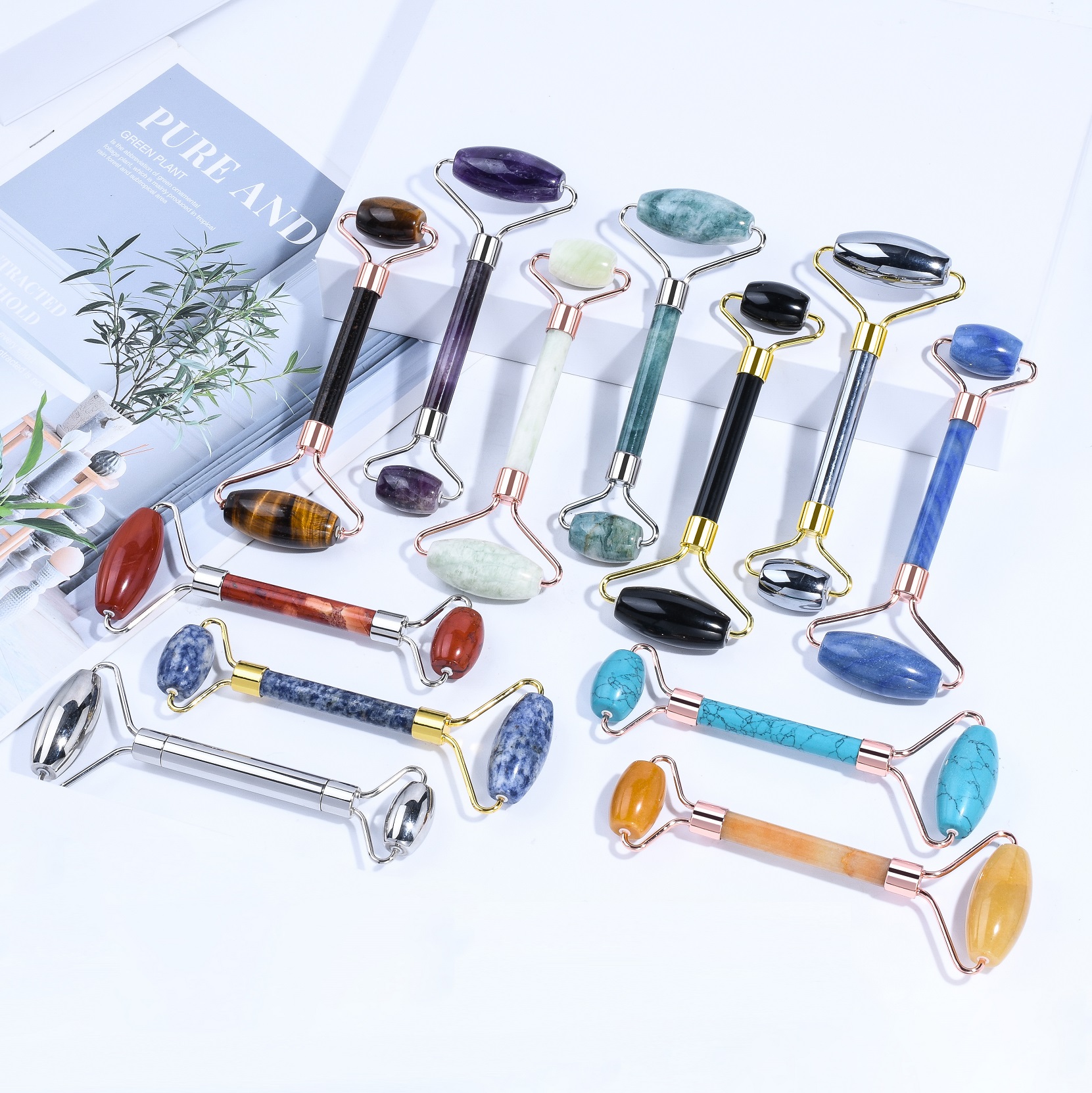What is Gua Sha?
When I was a kid, my grandma kept a clean ceramic spoon in the fridge. If her allergies flare up—or when she feels puffy under her eyes—she takes the cold spoon out and rolls the rounded back under her eyes for 30 seconds at a time.
For the uninitiated, the jade roller is pretty much what it sounds: a palm-sized, paint roller-like device with a jade cylinder at one end. It is said that the jade wheel has been part of China’s elite beauty treatments since the Qing Dynasty in the early 17th century. Those who associate the stone with certain properties claim that jade has special healing and soothing powers.
Fast-forward a few hundred years: In 2018, jade rollers were all the rage on Instagram and loved by beauty bloggers around the world. Their popularity can be attributed to their position at the intersection of two trends: growing interest in self-care and “natural” health products. You can get the Jade Roller for $12.99 at Amazon.com or $40 at Sephora; that’s also an option if you prefer rose quartz.
Some evangelists claim that the rolling motion of the stone on the face can help remove toxins and reduce puffiness, while others claim to be more effective: Regular use of a jade roller can reduce wrinkles, stimulate collagen, tighten pores, and may improve inflammatory skin condition. They’re often touted as “anti-aging” tools (a term that some beauty circles like Allure magazine have banned).
In fact, Manhattan-based dermatologist Suzanne Friedler explains that jade rollers are just as effective as any form of facial massage if done correctly. “Anytime you massage any tissue, you increase circulation. Your skin may look brighter, brighter, more contoured, and less puffy,” she says. “But if you’re looking for substantial change, that’s not what happens with jade rollers. It also doesn’t have an effect on inflammations like eczema or psoriasis.”
People need to be wary of the potential for jade rollers to spread germs — if you don’t sanitize the rollers, you could end up doing more harm than good — and overly aggressive use, says dermatologist Susan Bard, a Manhattan dermatologist. . “The coldness of the stone can certainly help reduce puffiness. But the downside is that if you rub too hard, it can actually aggravate acne or create irritation.” She agrees that regular roller use can provide some superficial benefits, but adds that the special ingredient isn’t jade. itself.
The heart keeps our blood flowing regularly throughout the circulatory system. But lymphatic fluid — which contains white blood cells and plays an important role in protecting the body from bacteria and disease — flows more slowly and can be helped manually. Budd explains that any form of massage can reduce puffiness by helping to move trapped fluid, called lymph, out of the stuck area. Meanwhile, the cold from a stone or even a metal spoon can reduce inflammation by causing blood vessels to constrict.
Elizabeth Taylor, owner and head groomer of True Beauty in Brooklyn, New York, often incorporates manual lymphatic drainage into her facials. There are more than 300 lymph nodes in the face and neck (essentially checkpoints where the lymph fluid is filtered to prevent infection); a facial massage can help the lymph move and drain, Taylor said. This, in turn, can give your face a more contoured look and give your skin a radiant glow.
How to Use Jade Roller?
The good news is that you can do it yourself, too: Using a facial oil, serum, or smoothing cleanser, pinch your thumb and forefinger together, starting at the center of your chin, and gently push back a few times along your chin line. Then, place your ring finger next to your inner eye, press lightly, and draw a half circle under your eye, all the way to your temple. Finally, place the tips of all 10 fingers on the center of the forehead and pull the fingers outward. At least, the massage itself felt great.
If you do see extra shine or reduced puffiness, don’t get too excited. “These are temporary results,” Friedler said. Facial massage – with stones or otherwise – is not a panacea for all skin problems. Claims that using a jade roller helps stimulate collagen – the skin’s main structural protein – lack truth: According to Friedler, the only way to do this is to damage collagen with laser treatments, acid peels, or retinoids.
Bard offers another warning for anyone jumping on the “natural skincare” bandwagon. “There are natural things that do have benefits, like aloe vera, and there are natural things you don’t want to put on your face — like poison ivy. Just because something has been around for a million years doesn’t mean it’s the best option. Scientifically proven products are always the best choice.”

